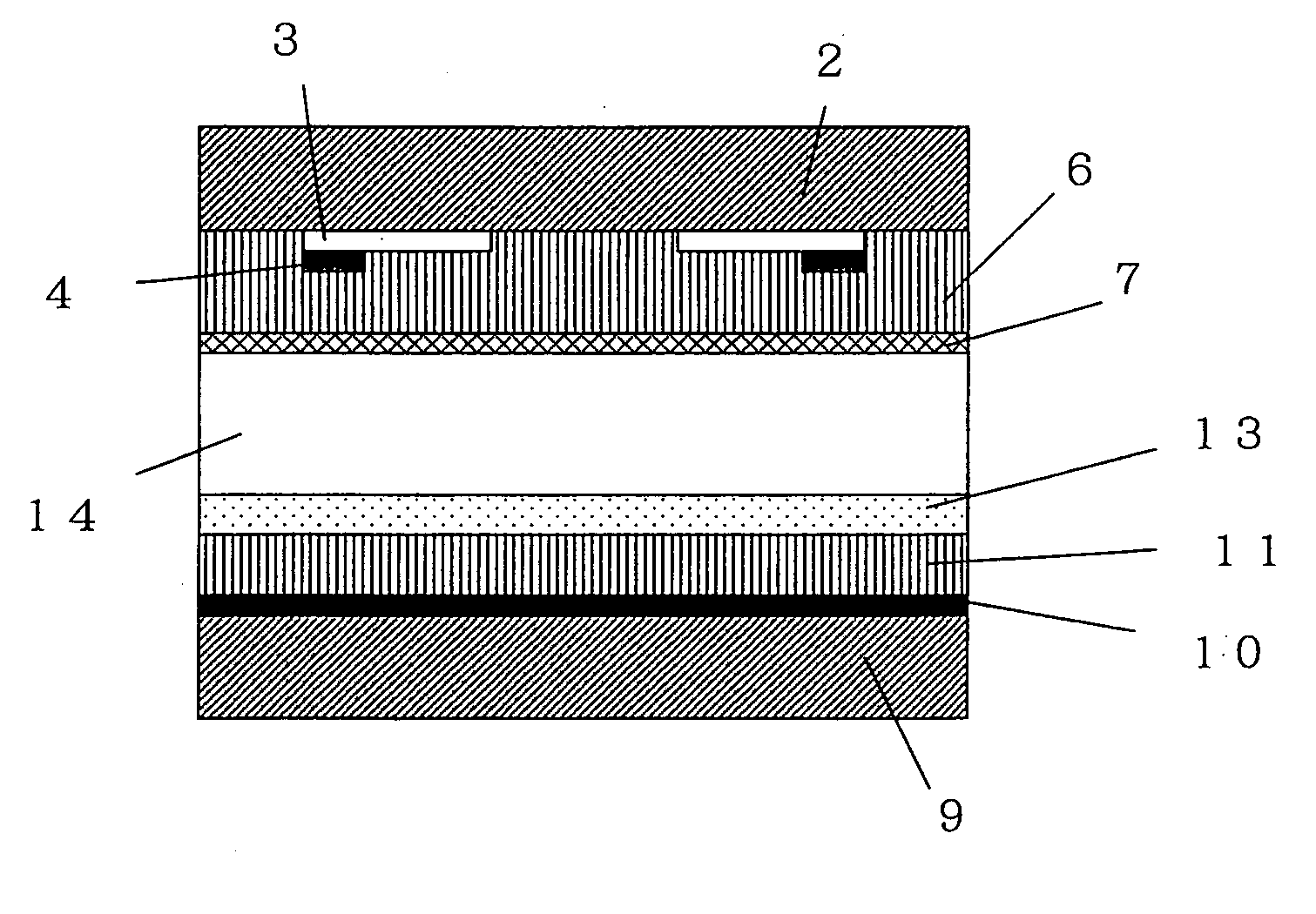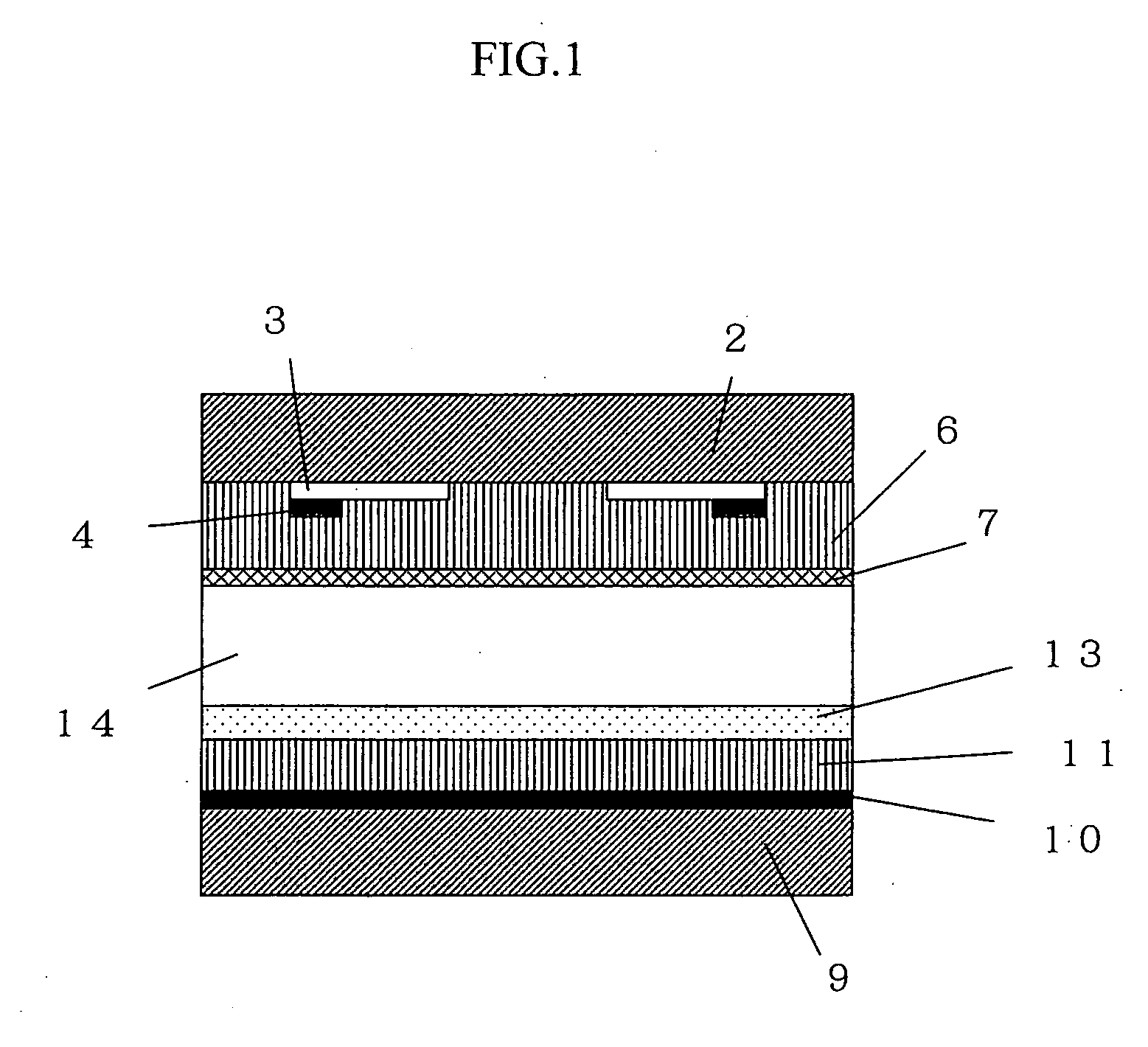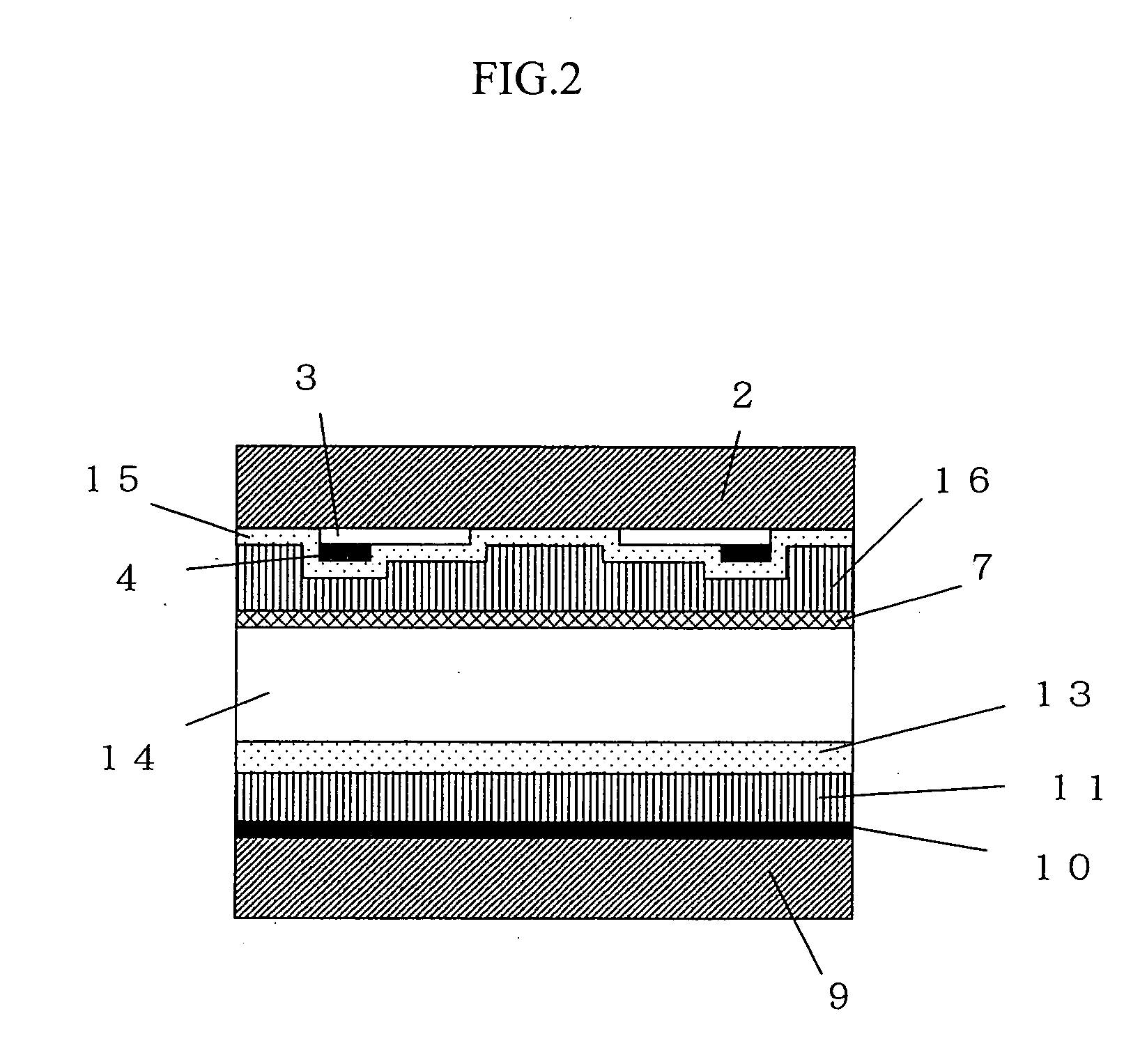Glass composition and paste composition suitable for a plasma display panel, and plasma display panel
a technology of plasma display panel and composition, applied in the field of glass composition, can solve the problems of lowering the electrical resistance affecting the display characteristics of the pdp, and affecting the display characteristics of the dielectric layer, so as to reduce residual stress
- Summary
- Abstract
- Description
- Claims
- Application Information
AI Technical Summary
Benefits of technology
Problems solved by technology
Method used
Image
Examples
first embodiment
[0033] The glass composition of the first embodiment is free of PbO, and includes GeO2 0.1-20 wt %, B2O3 3-20 wt %, ZnO 4-30 wt %, Bi2O3 40-80 wt %.
[0034] The effects of each component of the glass composition are as follows.
[0035] GeO2is a glass network-forming component, and has an effect of improving stability of the amorphous state. The GeO2 content must be at least 0.1 wt % in order to obtain this effect. However, deposition of GeO2 in the glass begins to occur when the GeO2 content exceeds 20 wt %, and therefore it is preferable that the GeO2 content is not more than 20 wt %.
[0036] Similarly, B2O3 also has a glass network-forming effect. In order to obtain amorphous glass, it is preferable that the B2O3 is at least 3 wt %. However, the glass begins to lose transparency when the B2O3 content exceeds 20 wt %, and therefore it is preferable that the B2O3 content is not more than 20 wt %.
[0037] In bismuth glass, ZnO has an controlling effect on the softening point of the glass...
second embodiment
[0039] The glass composition of the second embodiment is free of PbO, and includes GeO2 0.1-20 wt %, B2O3 12-35 wt %, ZnO 15-45 wt %, Bi2O3 10-40 wt %.
[0040] While the effects of the components of the glass composition are as described in the first embodiment, comparing the present embodiment with the first embodiment, the present embodiment has the following characteristics and benefits.
[0041] Whereas the Bi2O3 content is at least 40 wt % in the first embodiment, the Bi2O3 content is relatively low in the second embodiment, specifically, 40 wt % or lower, meaning that the Bi2O3 is less effective in lowering the softening point compared to in the first embodiment. However, because this is compensated for by increasing the B2O3 content to at least 12 wt % and the ZnO content to at least 15 wt %, B2O3 and ZnO contribute significantly to reducing the softening point. This enables the softening point of the glass composition to be kept to 600° C. or below in the present embodiment als...
implementation examples
[0094] The following describes implementation examples of the glass composition, the glass paste, and the PDP of the present invention. Note that the present invention is not limited to these implementation examples.
PUM
| Property | Measurement | Unit |
|---|---|---|
| temperature | aaaaa | aaaaa |
| softening point | aaaaa | aaaaa |
| dielectric constant | aaaaa | aaaaa |
Abstract
Description
Claims
Application Information
 Login to View More
Login to View More - R&D
- Intellectual Property
- Life Sciences
- Materials
- Tech Scout
- Unparalleled Data Quality
- Higher Quality Content
- 60% Fewer Hallucinations
Browse by: Latest US Patents, China's latest patents, Technical Efficacy Thesaurus, Application Domain, Technology Topic, Popular Technical Reports.
© 2025 PatSnap. All rights reserved.Legal|Privacy policy|Modern Slavery Act Transparency Statement|Sitemap|About US| Contact US: help@patsnap.com



